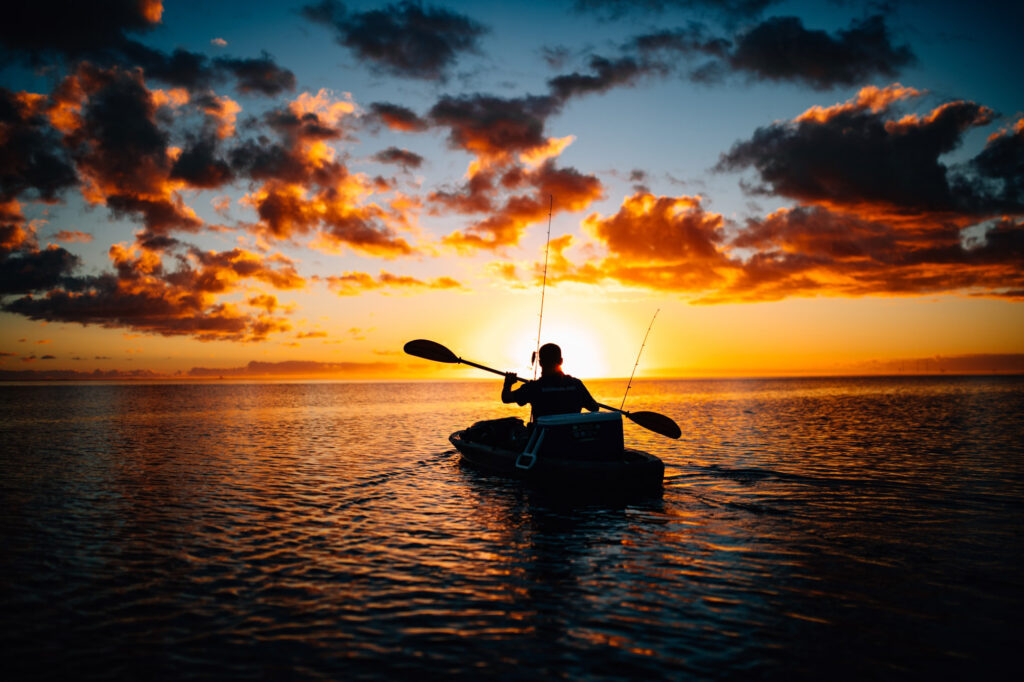
There’s quite a bit of cautious optimism as the 2023 salmon season quota setting process nears the finish line. This includes three coastal season options for recreational salmon fisheries that reveal a Chinook salmon quota larger than that of 2022, but with a slight dip on the hatchery-marked coho quota.
State fishery managers use a suite of scientific data, that includes watershed sampling and monitoring, ocean indicators, and previous year returns, to estimate the number of salmon returning and decipher how many fish are available to catch.
While the coho forecast is lower, there appears to be enough compared to the recent historical average to provide decent fishing opportunities off Neah Bay, La Push, Westport, and Ilwaco. Each option here below consists of start and end dates, plus a breakdown of the Chinook and hatchery-marked coho catch quotas.
Option one has a quota of 42,500 Chinook and 168,000 hatchery coho:
- La Push and Neah Bay (Marine Areas 3 and 4) is open daily from June 17 through September 30; Westport (Marine Area 2) is open daily from June 24 through September 30; and, Columbia River area (Marine Areas 1) is open daily from June 24 through September 30.
Option two has a quota of 37,500 Chinook and 155,400 hatchery coho:
- La Push and Neah Bay (Marine Areas 3 and 4) open daily from June 24 through September 30; Westport (Marine Area 2) open daily from July 1 through September 30; and, the Columbia River area (Marine Area 1) is open daily from June 24 through September 30.
Option three has a quota of 32,500 Chinook and 142,800 hatchery coho:
- La Push and Neah Bay (Marine Areas 3 and 4) is open daily from July 1 through September 24; Westport (Marine Area 2) is open from July 2 through September 30 with fishing allowed on Sundays through Thursdays only; and, Columbia River Area (Marine Area 1) is open daily from June 26 through Sept. 24.
All coastal ports could close sooner than the above dates if quotas are achieved before the closing dates. In each of the three options for Marine Areas 3 and 4 there is a proposed no Chinook retention east of the Bonilla-Tatoosh line beginning August 1; and, a tentative La Push Chinook bubble fishery that opens October 3-7. A Buoy 10 fishery at the Lower Columbia River mouth opens August 1 with three hatchery coho quota levels plus Chinook seasons and dates will be decided soon.
For inner-marine waterways it appears a strong number of pink salmon will likely generate some excitement in the Strait of Juan de Fuca and Puget Sound as well as some rivers during late summer. The pink forecast is 3,950,917 compared to 2,925,681 in 2021 and 608,388 in 2019. The 2023 pink forecast is very close to the 10-year average of 4 million pinks. Pinks are relatively small, in the 3-to-5-pound range, and return in bulk during odd-numbered years after spending two years in the ocean before migrating to natal rivers.
The general outlook in the Puget Sound region for Chinook and coho should mirror the 2022 fishing seasons. Despite the huge pink return it is unlikely to see any newly added saltwater fisheries since the pinks intermingle with other salmon stocks of concern. The 2023 Puget Sound hatchery Chinook forecast is up 5% but the wild forecast is down 2% compared to the 2022 forecast. The wild forecast component is 29,780 (28,992 in 2022) and the hatchery forecast is 228,980 (201,059 in 2022). Poor wild Chinook forecasts mainly in the Stillaguamish, Skagit, and Snohomish rivers will likely affect how marine and freshwater fishing seasons are structured. The 2023 Puget Sound hatchery coho forecast is up 16% and the wild forecast is up 11% compared to the 2022 forecast. The combined Puget Sound hatchery and the wild coho forecast is 760,029 compared to 636,952 in 2022.
The Columbia River fall Chinook forecasts are improved, and the forecast is 545,300 compared to forecast of 484,900 and an actual return of 674,786 in 2022.
An estimated 1,135,700 coho are expected to arrive off the Washington coast. That is down a bit from a forecast of 1,225,900 and an actual return of 887,500 in 2022.
The Columbia River subtotal forecast is 886,100 coho compared to 997,200 in 2022 and an actual return of 685,200. If coho numbers pan out, look for decent in-river fishing and its tributaries during late summer and fall. The Upper Columbia summer Chinook forecast of 84,800 in 2023 is up from a 2022 forecast of 56,300 and an actual return of 78,444. This run is the main driver for recreational fisheries that usually begin in early July from the Rocky Reach Dam to Chelan Falls and further upstream around Brewster.
The Columbia sockeye forecast is a modest 234,500 in 2023 but the actual return hit a robust 664,935 in 2022, which was the largest since Bonneville Dam was erected in 1938. A sockeye fishery will depend on in-season assessments, but in 2022 it opened in July and continued through August.
All Washington salmon fishing seasons including those for Oregon and California will be finalized at the PFMC meetings on April 2-7 in Foster City, California, so stay tuned. In the May issue we’ll break down some of the summer and fall top salmon fishing prospects!